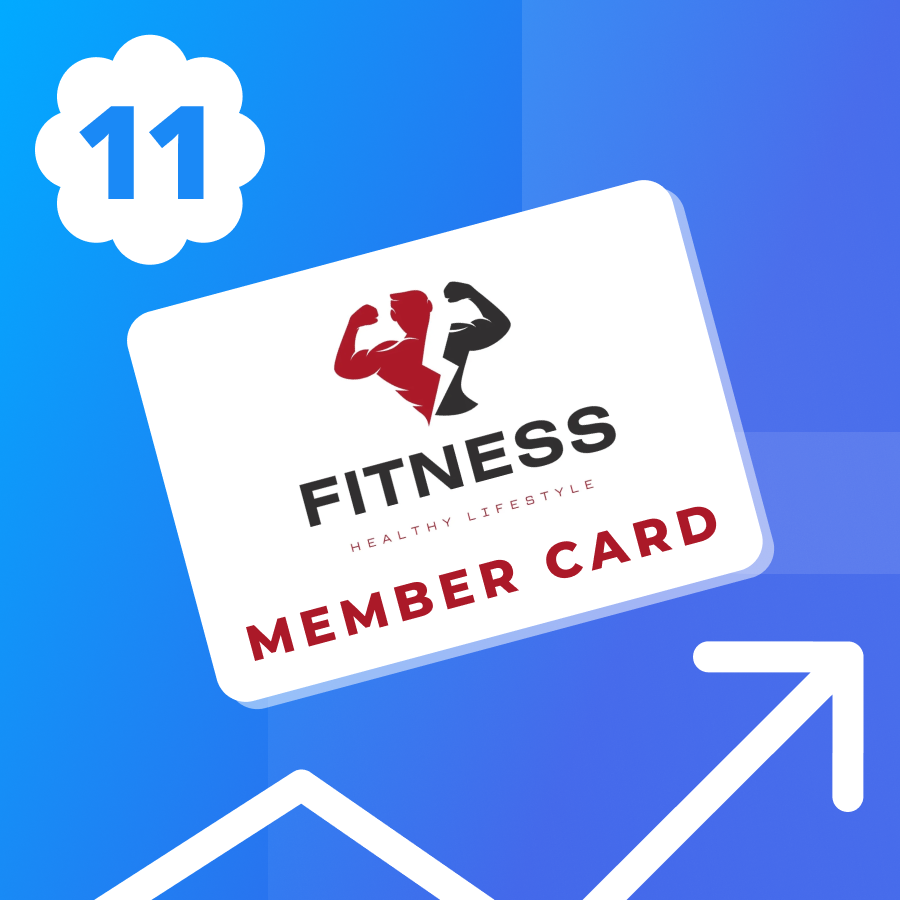Cross-Selling Strategies to Increase Your Gym’s Revenue

Cross-selling creates a golden opportunity to boost a member’s gym experience, leading them to discover more than just their initial sign-up perks. It introduces them to extras like nutrition counseling, specialized classes, and health supplements. As members discover the benefits of these additional services, their loyalty grows, turning them into passionate supporters of your gym.
This article will uncover the dynamics of cross-selling within the gym and fitness sector, showcasing how to effectively increase your gym’s revenue through thoughtful cross-selling strategies that simultaneously enrich the member experience.
Benefits of Cross-Selling in Your Fitness Business
- Enhances Member Experience: Cross-selling introduces members to services and products that complement their fitness journey, offering them a more holistic gym experience.
- Increases Revenue: By offering additional products or services, you’re not just making more sales but also increasing the average transaction value. This incremental revenue can significantly contribute to your gym’s financial health, enabling you to reinvest in better facilities, equipment, and services for your members.
- Builds Member Loyalty: When members benefit from products or services that genuinely help them achieve their fitness goals, their satisfaction, and loyalty to your gym increase. This loyalty can translate into long-term memberships, positive word-of-mouth referrals, and a strong, engaged community.
- Differentiates Your Gym: Offering a range of products and services can set your gym apart. Cross-selling allows you to offer unique combinations of services and products that cater to niche interests and needs, making your gym the preferred choice for potential members looking for a comprehensive fitness solution.
- Encourages a Community Feel: Cross-selling can also promote a sense of community among members. For instance, introducing members to group classes or special interest clubs within the gym can help them connect with others who share similar goals and interests, enhancing their sense of belonging and engagement with the gym.
- Leveraging Your Existing Customer Base: Acquiring new members is often more challenging and costly than selling to existing ones. Cross-selling leverages your current member base, offering them additional value and enhancing their overall satisfaction without significant marketing expenditures.
- Fosters Member Success Stories: As members engage with a wider array of your offerings and see better results from their efforts, they become success stories and testimonials for your gym. These stories are powerful marketing tools that can attract new members and further validate the effectiveness of your cross-selling strategy.
Strategies to Implement Cross-Selling in Gyms and Fitness Centers
Implementing effective cross-selling strategies can transform your gym’s revenue and enhance the overall member experience. Here are key tactics to consider:
Personalize Your Approach
Start by leveraging data and insights about your members’ preferences, behaviors, and fitness goals. Use this information to tailor your cross-selling efforts, recommending products and services that genuinely align with their individual needs. Personalization not only increases the likelihood of a sale but also makes members feel valued and understood.
Train Your Staff
Ensure your staff is well-informed about all the products and services your gym offers. They should be able to explain the benefits and how they complement the member’s fitness journey. Training your staff to recognize opportunities for cross-selling and to do so in a helpful, non-intrusive manner is crucial.
Bundle Products and Services
Create bundled offers that package together products and services at a discounted rate. For example, a membership package that includes a few personal training sessions and a nutrition consultation can be attractive to new members. Bundles make it easier for members to try out new services and can provide them with a more integrated fitness experience.
Leverage Technology
Use your gym’s management software to track member activity and preferences, which can help identify cross-selling opportunities. Additionally, a mobile app can be a powerful tool for sending personalized offers and discounts directly to members, encouraging them to take advantage of new or complementary services.
Create a Member Reward Program
Introduce a reward program that incentivizes members to try different services and products. Points can be earned with each purchase and redeemed for free classes, sessions, or products. This not only encourages cross-selling but also enhances member loyalty.
Showcase Success Stories
Share testimonials and success stories from members who have benefited from cross-selling. Whether it’s someone who achieved their weight loss goal with the help of a personal trainer or improved their endurance through specialized classes, real-life stories can inspire others to explore additional offerings.
Host Special Events
Organize events or workshops introducing members to different fitness and wellness aspects. These can be an excellent opportunity to showcase your gym’s full range of services and products, from new fitness classes and equipment demonstrations to nutrition and wellness seminars.
Feedback and Continuous Improvement
Regularly solicit feedback from your members about their experiences with the additional services and products they’ve tried. Use this feedback to refine your cross-selling strategies, ensuring they remain aligned with member needs and preferences.
Always prioritize the member’s experience and value proposition so that any cross-selling feels like a natural and beneficial extension of their fitness journey.
Potential Risks of Cross-Selling and How to Mitigate Them
While cross-selling holds significant benefits for gyms and fitness centers, it’s not without its challenges. Recognizing potential risks and developing strategies to mitigate them is crucial for maintaining trust and satisfaction among your members. Here are some common risks associated with cross-selling and tips on how to avoid them:
1. Over-Promotion Leading to Member Discomfort
Members might feel overwhelmed or irritated if they perceive cross-selling efforts as overly aggressive or irrelevant to their interests.
Ensure that all cross-selling is done thoughtfully and in moderation. Train staff to recognize when a member is open to suggestions and when to step back. Always prioritize the member’s needs and comfort over making a sale.
2. Dilution of Core Services
Focusing too heavily on cross-selling can sometimes dilute your gym’s core offerings, potentially compromising service quality.
Regularly evaluate your service offerings to ensure they remain at high standards. Cross-selling should complement, not overshadow, your core services. Balance is key to maintaining the quality and reputation of your gym.
3. Mismatched Offers
Offering products or services that don’t align with a member’s needs or fitness goals can lead to dissatisfaction and a perception that the gym doesn’t understand their needs.
Leverage member data and feedback to make personalized, relevant recommendations. Investing in a robust CRM system can help track member preferences and history, ensuring offers are well-targeted and appropriate.
4. Member Trust Erosion
Ineffective or insensitive cross-selling strategies can erode trust, making members skeptical of even genuinely beneficial offers.
Adopt a transparent approach by explaining the benefits and value of any cross-sell item clearly and honestly. Encourage staff to share their personal experiences or success stories related to the service or product, fostering a genuine, trust-based relationship.
5. Analysis Paralysis
An overload of options can overwhelm members, making it difficult for them to make a decision, potentially leading to decision fatigue and inaction.
Simplify choices by curating a select few bundles or recommended combinations. Guide members through the decision-making process with personalized consultations, helping them find the best fit for their fitness journey.
6. Staff Training and Motivation
Staff may be hesitant or lack the confidence to effectively cross-sell if they’re not adequately trained or motivated.
Provide regular training sessions focused on product knowledge, sales techniques, and the art of soft selling. Implement incentive programs to reward successful cross-selling efforts, aligning staff motivation with gym goals.
By being mindful of these potential risks and implementing strategies to address them, gyms can ensure their cross-selling efforts enhance the member experience, build loyalty, and drive revenue without compromising service quality or member satisfaction. The goal is to create a win-win scenario where members feel supported and valued in their fitness journey and the gym enjoys sustainable growth and success.
Conclusion
Embracing strategic, member-centric cross-selling practices will allow you to unlock a powerful synergy between business growth and member satisfaction. Ultimately, the success of cross-selling hinges on its execution with empathy, precision, and a deep understanding of members’ evolving needs.
If you need help managing your membership subscriptions and automatic communications and promos, contact our team, we can help!



